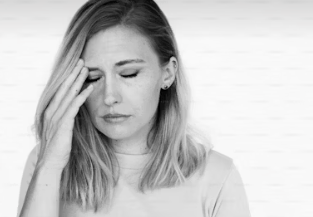Signs of Arthritis?
Published on
21 Jun 2019


Written by
Emma Martel (Lee)
Consultant Physiotherapist
Call us on: (03) 9975 4133
Emma Lee has a passion for complex presentations, and as this blog will show you she has found from experience that there are often more than one factor to consider in a patient presentation. Arthritis may be one of them. And as Emma explains there is more to Arthritis than we may realise
The most common questions include “Why are joints aching in the colder mornings?” or “Is this a sign of my age!!??”
Arthritis is a term that can be thrown around a lot, however it is an umbrella term which is used to describe a group of conditions which affect the joints in our body. These conditions cause damage to the joints, and this can cause pain and impact the mobility around the joint.
Many people believe that getting arthritis is just a part of getting old, however anyone can get arthritis, even children. 1 in 6 people in Australia have arthritis, and 2 out of every 3 people with arthritis are between 15 and 60 years old.
Types of Arthritis:
Did you know there are over 100 different types of arthritis? And each may impact the joints in different ways? Some forms will impact an isolated area or body part, however other types may impact our whole body system or multiple joints.
Most common types of arthritis:
- Osteoarthritis
- Rheumatoid Arthritis
- Gout
- Ankylosing Spondylitis
Symptoms of Arthritis:
Arthritis can manifest in lots of different ways, however the most common symptoms are:
- pain
- stiffness or loss of mobility of a joint
- swelling over a joint
- redness or hotness in a joint

Diagnosis:
Not all pains in/around a joint will be caused by arthritis so it is important to get a clear diagnosis from your GP or Physiotherapist in order to understand how to best manage your symptoms. Your Physiotherapist will likely perform a physical examination, and may arrange XRAYs or send you to see your GP to run some further tests which may include blood tests to obtain a conclusive diagnosis. Occasionally it may be necessary for your GP to refer you to consult with a Rheumatologist who specialises in this area of medicine.
Consult your GP if you notice pain and stiffness that:
-comes on for no apparent reason
-persists longer than a few days
-is associated with acute swelling, redness and hotness of your joint.
What about pain?
Pain does not necessarily equal damage, however it is your bodies way of commanding your attention. Sometimes pain can be caused by an unhelpful way we have been moving, or due to muscular weakness or tightness in surrounding tissues around our joint.
Pain can be directly related to an arthritic presentation in one or more joints. This may be treated with medical intervention depending upon the type of arthritis that is specifically diagnosed. See below.
Pain can equally be related to the unhelpful way we have been moving, or due to muscular weakness or tightness in surrounding tissues around our joint. This includes poor movement through our joints when weight bearing or performing daily activity. This may be related to muscular weakness, compensating movements, or avoiding weight bearing due to pain which leads to further stiffness and immobility.
The good news is that these things can be easily addressed with the help of your physiotherapist. Each person’s body is different and may move or use different muscles for similar activities, therefore our advice and exercise prescription varies from person to person. A customised program is always likely to be more effective than a program you get from the internet for this reason, as we are able to customise and factor in your individual needs when we establish your program.
What about Medications?
Medications can also be incredibly helpful helpful to reduce your pain levels and can provide you with a window to move and gain the benefits of exercise. Have a chat with your GP to discuss your medication options, especially if your pain is limiting you from moving and exercising completely. There is a wide range of medically treated arthritic conditions in today’s modern science.
About the Author
Emma Martel (Lee) — Consultant Physiotherapist
Emma values the importance of listening to her patients to fully understand their symptoms and treatment goals. Through skilled biomechanical analysis of the whole body, her objective lies not only in treating symptoms but identifying the true origin of the problem and working with her patients to prevent future episodes of pain and injury.


